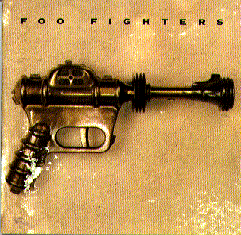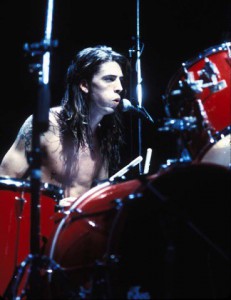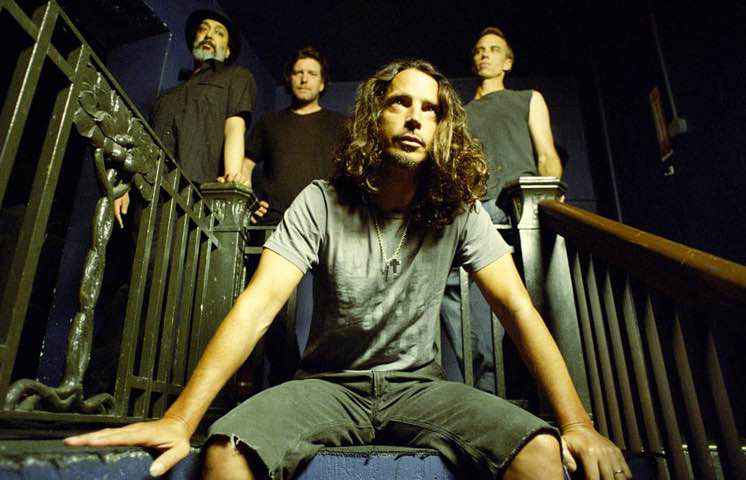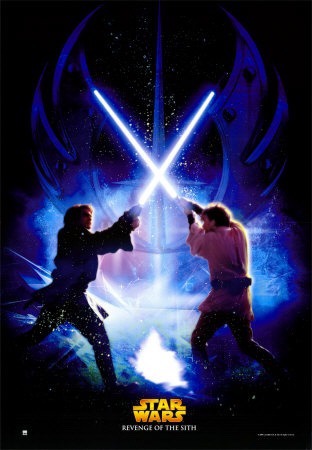The Foo Fighters are back with a shiny new album and with mega stadium tours to come. Dave Grohl, utterly adored by many, not so loved by others, has become something of a divisive player (to some) in contemporary rock music.
This, by the way, isn’t a review of Sonic Highways (I don’t do album reviews); but more a reflection on almost twenty years of the Foo Fighters, the seemingly special place Dave Grohl holds in modern rock music and whether that’s a good thing or not.
Having listened to the new album Sonic Highways and watched some of the accompanying documentary films (which are really good, by the way), I’ve been thinking about Dave Grohl and his very successful band quite a bit lately. I haven’t been sure how I feel about Grohl or the Foo Fighters for a long time.
Twenty years or so ago when I first read a news item in Kerrang! magazine that Dave Grohl was forming a new band, I was as happy as Larry.
And when I heard the infectious first single ‘This is a Call’ and then that first album, I was immediately and enthusiastically on-board for the New Dave Grohl Experience. In 1995 I loved that first album and living in the immediate post-Nirvana, post-Kurt world I was genuinely both grateful and enthusiastic that Grohl was pushing on with a new band (and even more so when Pat Smear was announced a band member).
It provided a strange sense of continuity; there was never going to be new Nirvana material, but at least the surviving band members would continue making music (Krist Novoselic’s short-lived and criminally underrated Sweet 75 followed soon after).

That first album, which was essentially a demo tape recorded entirely by Grohl himself and therefore a testament to his undeniable brilliance as a multi-instrument musician, still stands in my view as the best Foo Fighters album. It was good, it had those distinctive Dave Grohl drums and it helped fill some of the void.
Beyond those first couple of years, however, my interest began to wane. 1997’s The Color and the Shape – technically the first proper Foo Fighters album (with the full band) – had some terrific moments, but also included the kind of tame, middle-of-the-road material that would come to characterise much of the subsequent Foo Fighters catalogue.
Everything else that has followed has been a mixed bag, every project, every album, having some stand-out moments and high points but also a more general swathe of tame, middle-of-the-road, radio-friendly music.
Most of the band’s most popular songs are songs I’ve never really liked much – ‘Times Like These’ and ‘Learn to Fly’, for example, which always felt like cheesy radio songs.
That’s kind of the situation ever since; I don’t expect FF albums to be amazing, but generally expect there to be one killer song, two or three pretty good offerings and then around 60% filler. That could, in fact, be argued to be the formula for most successful, established bands, including acts from that incredibly rich era of music; it could be said to characterise the average modern Pearl Jam release, for example. But Pearl Jam put out six solid albums before that started to happen; Foo Fighters was already beginning to feel that way by 1997.
By the time the third FF album, 2000’s There’s Nothing Left to Lose, I had started to lose interest.

There’s also a sense among longer-time music fans or Nirvana purists that what Grohl and Foo Fighters have become in the 21st century is essentially everything Kurt Cobain would’ve been terrified of becoming himself.
Grohl is seen by many as the surviving flag-bearer of modern rock and of the alternative rock ‘scene’ he originally came from. That is more an appearance than a reality, however; important and majorly influential acts pre-dating the Foo Fighters are still around and putting out new music. To name just a few, Alice in Chains and Soundgarden reformed, Billy Corgan is still working feverishly with two new albums expected out imminently, while Pearl Jam have been continuously putting out music and selling out tours for over two decades.
And there’s the Red Hot Chili Peppers. Even The Pixies recently returned with their first proper album in over two decades.
But Grohl long ago seemed to emerge as the enduring poster-boy for American rock music in the 21st century; and the lasting, mainstream, populist face of ‘alternative’ rock in a drawn-out era in which rock music is generally no longer part of the mainstream narrative and in which the once cutting-edge alternative acts are now either long gone or are long-term career musicians in their late forties or early fifties.
That wasn’t the case twenty years ago at the height of alternative music’s brief penetration of the mainstream; that vapid institution of the MTV Awards shows, for example, for a brief time would include everyone from Nirvana, Pearl Jam, Stone Temple Pilots and Smashing Pumpkins to Neil Young or PJ Harvey, while also doing all the kiddy stuff too (not that the game wasn’t always vapid, but at least it allowed for some music and musicians of substance for a short time). But that died off very quickly, with chart-pop quickly re-asserting itself along with the domination of mainstream (non-political) rap and Hip-Hop.
The Foo Fighters seemed to be the only act to survive all of that, as far as mainstream coverage goes; and while they are a genuinely good band in their own right, capable of some awesome music, and Dave Grohl is an immensely talented musician, there’s long been the sense that they are the ‘safe face’ of the genre who’ve been somehow chosen by the guardians of ‘popular culture’ to function as ‘The Rock Act’.
Subsequently they are a band not only liked by indie kids and rock music enthusiasts but also by teenage girls whose Foo Fighters CDs might sit comfortably alongside the likes of Rihanna, One Direction or Kanye West products.
Which isn’t the band’s fault or Grohl’s doing, of course, but is just as much the result of the incredibly lazy mainstream music media seeming to hold up the Foo Fighters as the token rock act in the selective arena of the mainstream music industry (something that even Grohl himself has previously alluded to).
Nirvana, of course, were briefly a chart-topping act too, but they never acquired that ‘mainstream’ stigma, partly because Kurt Cobain’s nature simply didn’t lend itself to that and partly because Nirvana fandom itself (at the time anyway) was actually something of a doorway into a larger world: that larger world being alternative music in general, the Pacific North-West music scene or the bands and influences Kurt and Nirvana were into themselves. It was a well- attested phenomena that Nirvana acted as a kind of magic door into the Narnia of alternative music, with kids discovering Nevermind via the mainstream but ending up also becoming fans of the Pixies, the Wipers, Sonic Youth or a hundred other acts.
Nirvana, in other words, aside from being a successful act themselves were also a cultural game-changer both in the industry (for a while at least) and to people on an individual level, many of whom had their formative tastes and culture enormously influenced for life by that Narnia-esque Nirvana starting point.

While the success and longevity of Foo Fighters has without doubt owed a great deal to Nirvana, the large shadow cast by Grohl’s old band is something that most other musicians and bands don’t really have to deal with.
Grohl himself is probably the biggest rock star on the planet; a role which he seems to play with enthusiasm and a permanently self-effacing spirit. But it’s still strange to see a former member of the most anti-stardom, anti-mainstream act end up in that situation (or appearing in Bob Geldof’s ‘Feed the World’ single alongside every dreadful pop star you can think of, which Grohl recently did).
That’s a view that a lot of people have and one which I personally have crossed in and out of over the years.
Dave has always had that cheerful, tidal-wave, love-for-performing energy to him and it’s probably the Foo Fighters most defining property. The former was a much richer era musically, but one of the chief reasons Grohl is still putting out music and filling venues is probably because he isn’t the owner of a tortured soul or conflicted world-view but merely the owner of some musical instruments and a hunger to record and perform. A guy who lives for rock n’ roll, in other words.
That guy lives and breathes for music.
And at no point in the twenty-years-and-counting Foo Fighters story have I ever felt Grohl had become detached from his punk-rock roots or the perceived ethos of the former underground scenes he was such a part of. On the contrary, it has always been evident – and projects like the Sound City and Sonic Highways documentaries reinforce this fact – that Grohl is constantly looking to remain attached to and pay dues to the indie, alternative and punk scenes he came from and to both his influences and contemporaries.
The one thing you can never really accuse Grohl of is not having the cred or the pedigree.
It may seem paradoxical at first glance, but he’s probably the one guy who can play Wembley and feature on ‘Feed the World’ on the one hand and still be legitimately punk-rock on the other. He might be the ultimate proof that you can be mainstream and not completely lose your roots either; something that Kurt was probably unable to envision for himself.
In some ways, I find myself going somewhat full circle with Foo Fighters; starting as a super-fan in 1995, then drifting off over a long time and eventually paying only a minimal amount of attention. And any time I heard or saw something like ‘The Best of You’ or ‘Times Like These’ on TV it simply gave me the impression that I wasn’t missing anything.
By 2011’s Wasting Light, however, something changed and I started to come back. Partly it was the aura of punk-rock recidivism in the way that album was said to have been recorded, along with the fact that Butch Vig was producing and the fact that I heard the kick-arse ‘White Limo’ and immediately was reminded of how good Foo Fighters could be.
And there is undeniably something infectious about the way Dave Grohl goes about things, and something still endearing about the idea of the pure-spirited music enthusiast/fan-boy who also happens to be a one-man multi-talented musical force being the primary rock star of his age. He isn’t the complex, brooding tortured soul spewing out dark poetry, nor the megalomaniacal 80s style rock god, but simply a prolific and forefront purveyor of rock n’ roll with an insatiable appetite for music itself.
Whether it’s as a drummer, as a frontman and songwriter or even as a documentary maker, he is genuinely a credit to the art form itself and is now one of the very few principal purveyors of that art form on a world platform.

I’ve come to realise that while I’m not a huge Foo Fighters fan, I am actually just as much a Dave Grohl fan now as I was when he was pounding the drums on ‘Aneurysm’ or ‘Scentless Apprentice’.
And as time has gone on, I’ve come around more and more to the opinion that, whether or not Foo Fighters are the ‘token rock act’ of the mainstream club, we should be glad that Grohl is still there on that mainstream stage flying the flag for crafted, heavy-drumming, riff-based rock music in these tedious, quality-starved times.
No, it isn’t life-changing, and no it isn’t edgy or dangerous. But what is these days?
And it’s still gratifying to me to think that the guy who was pounding the skins on Nevermind and In Utero, the guy whose extraordinarily powerful drumming transformed Nirvana’s sound, and the guy who single-handedly put together that first Foo Fighters album and started a new era for himself is still here, still making records, still putting music together and bringing musicians together in celebration of the art of rock n’ roll itself.
I’m ultimately glad that he is still such a visible presence in the rock music arena all this time later, holding down that tiny fort that has been afforded to the dying art of rock music on the main-stage of popular culture. He and the Foo Fighters also provide a living, real-time rock act of quality for kids today who never got to experience things like Nirvana, Soundgarden or those other great bands and scenes first-hand and who are otherwise starved for options.
And the fact is they’ve put out some damn good songs along the way, even if they’ve put out a lot of forgettable material too. The fact remains that there are very few bands that can rock out as potently as the Foo Fighters do when they’re on their best form (Watershed, White Limo, My Poor Brain, to name a few). A perfect, current example of that is ‘Feast and the Famine’, which is the most kick-arse track on Sonic Highways.
Soon as I heard that song I had a smile on my face and wanted to hear it a dozen more times. Further, Taylor Hawkins is a really good drummer, and that dual guitar dynamic that powers the band’s heavier songs is still awesome.
I was watching some Nirvana videos recently (nothing changes; if I live to 80 I’ll still be re-watching old Nirvana videos) and I suddenly had a dumb-ass revelation, realising anew that Dave on the drums for Nirvana is Dave the Foo Fighters frontman who’s still going strong two decades later. I mean everyone knows that of course, but sometimes you get so used to something that you forget the reality of it – of how unlikely it would’ve seemed back then that Nirvana’s drummer would end up fronting a hugely successful band for twenty years and more after Nirvana’s end.
I’m still glad he did; still glad he chose to embark on his second life as a rock star. We would’ve missed out on a lot if he hadn’t.




